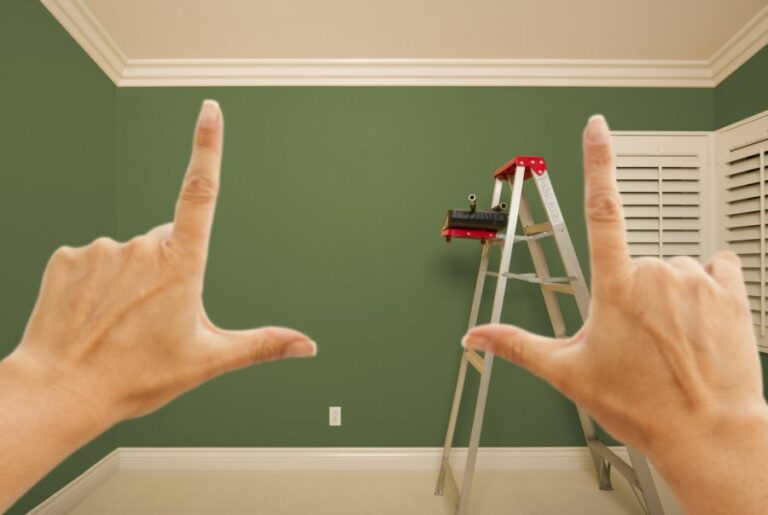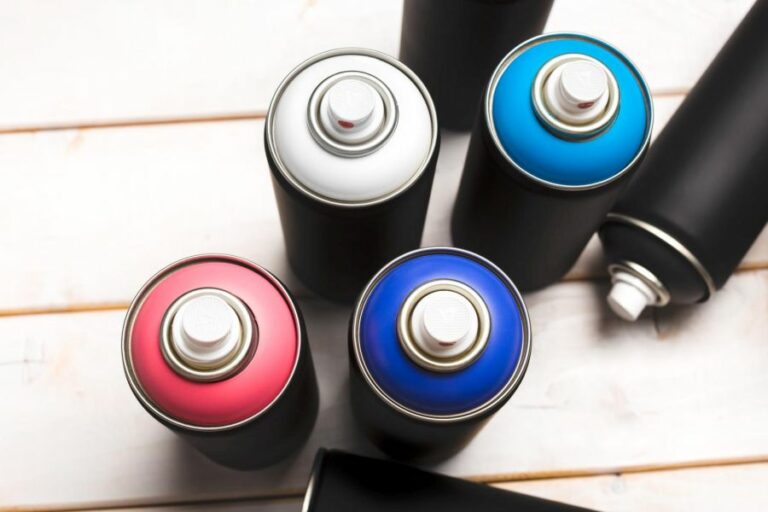Fabric Paint Outdoor Umbrella, 25 Things You Should Know
If you want to give your outdoor umbrella a fresh look or are bored with its plain, monochromatic design, fabric paint can be your go-to solution! With the right products and techniques, you can create a stunning piece of functional art to brighten your patio or garden. Stay tuned as we discuss everything you need to know about using fabric paint to transform your outdoor umbrella into a stylish masterpiece.
Fabric paint outdoor umbrella:
To repaint an outdoor umbrella, choose a fabric paint specifically designed for the umbrella’s material, ensuring it is water-resistant, UV-resistant, and fade-resistant. Clean the umbrella, disassemble if possible, and apply a primer if necessary. Use stencils or masking tape for designs, and apply multiple coats of paint for a durable finish. Allow it to dry and cure before reassembling and using the umbrella.

Discover the wonderful world of fabric paint and how it can transform your outdoor umbrella into a beautiful, weather-resistant work of art. Read on to learn more about techniques, designs, and tips to make your umbrella really stand out. Keep exploring to unleash your inner artist!
Contents
- 1 Outdoor Fabric Paint for Umbrella
- 2 Is it Possible to Apply Paint on a Fabric Outdoor Umbrella?
- 3 What Type of Paint Should Be Utilized for an Outdoor Umbrella?
- 4 Is it Possible to Apply Fabric Paint on an Umbrella?
- 5 What Type of Paint is Suitable for Outdoor Fabric Applications?
Outdoor Fabric Paint for Umbrella
Outdoor umbrellas provide both functionality and aesthetic appeal, offering shade as well as enhancing the overall look of your patio or garden.
However, just like any other outdoor furniture, umbrellas can start to show signs of wear and tear over time, especially when exposed to harsh weather conditions. One way to spruce up your umbrella and give it a fresh look is by using fabric paint.
• Choosing the Right Fabric Paint
When selecting a fabric paint for your outdoor umbrella, it’s important to consider several factors, including the type of material of the umbrella, the desired design or pattern, and the durability of the paint. Here are some suggestions for selecting the right fabric paint:
- Umbrella Material: Outdoor umbrellas are typically made from polyester, acrylic, or olefin fabrics. To ensure proper adhesion and lasting results, choose a paint specifically designed for the type of fabric your umbrella is made of.
- Paint Durability: Since an outdoor umbrella is constantly exposed to rain, sunlight, and humidity, it’s essential to choose a paint that is water-resistant, UV-resistant, and fade-resistant. Look for fabric paints labeled as “outdoor” or “weather-resistant” to ensure optimal durability.
- Design Flexibility: Fabric paints come in various forms, such as spray, brush-on, and markers. Consider the design you’d like to create on your umbrella and choose the paint form that will provide the most ease and precision for your intended design.
• Preparing the Umbrella
Before you start painting, it’s important to first clean and prepare the umbrella surface. This will remove any dirt or contaminants that could interfere with the paint’s adhesion. Follow these steps:
- Clean the Umbrella: Use a soft-bristle brush and a solution of mild dish soap and water to gently clean the umbrella fabric. Make sure to remove any dirt, mildew, or debris. Rinse the umbrella thoroughly with clean water, then allow it to air-dry completely.
- Disassemble the Umbrella: If possible, remove the fabric from the umbrella frame to make painting easier and more precise. This will also prevent any accidental paint transfer onto the frame. If the fabric cannot be removed, carefully cover the frame with painter’s tape or masking tape to protect it from paint.
• Painting the Umbrella
Once the umbrella is clean and dry, it’s time to start painting. Here’s a step-by-step guide to ensure a professional finish:
- Apply a Primer: Although not always necessary, applying a primer to the umbrella fabric can help the paint to adhere better and provide a more even finish. Choose a primer specifically designed for fabric and apply it according to the manufacturer’s instructions.
- Stencil or Mask the Design: If you’re painting a specific design or pattern, use masking tape or stencils to create the desired shapes. This will help ensure clean lines and a professional appearance.
- Apply the Fabric Paint: Depending on the type of paint you’ve chosen (spray, brush-on, or markers), apply the paint according to the manufacturer’s instructions. Make sure to work in a well-ventilated area and follow any safety guidelines provided by the paint manufacturer.
- Multiple Coats: For a more vibrant and durable finish, consider applying multiple coats of paint. Allow each coat to dry completely before applying the next one. This will help improve the paint’s adhesion and build a stronger color.
• Drying and Curing the Paint
After you’ve finished painting your outdoor umbrella, it’s crucial to let the paint dry and cure properly. This will ensure the durability and longevity of the paint job. Follow these steps:
- Drying Time: Allow the paint to dry for the recommended amount of time indicated by the paint manufacturer. This can vary from a few hours to several days, depending on the type of paint and the number of coats applied.
- Curing Time: In addition to drying, fabric paint often requires a curing period to fully set and harden on the fabric. This can take anywhere from a few days to a few weeks, depending on the paint. During this time, avoid using or exposing the umbrella to moisture or extreme temperatures.
- Reassemble the Umbrella: Once the paint is fully dry and cured, carefully reassemble the umbrella if the fabric is removed from the frame.
• Final Thoughts
Repainting an outdoor umbrella with fabric paint is an excellent way to extend its life and enhance its appearance.
By selecting the right paint, properly preparing the umbrella, and following the correct painting and drying techniques, you can achieve professional, long-lasting results that will enhance your outdoor space for years to come.
Is it Possible to Apply Paint on a Fabric Outdoor Umbrella?
Outdoor umbrellas are essential for providing shade and protection from the elements during sunny days. Over time, they can become faded, stained, or simply outdated in terms of style.
Rather than investing in an entirely new umbrella, a more cost-effective solution is to paint the existing fabric to give it a fresh look. This guide examines the options for painting an outdoor cloth umbrella and provides step-by-step instructions to achieve the best results.
• Selecting the Right Paint
When choosing paint for an outdoor cloth umbrella, selecting a type specially designed for fabric applications is essential. These paints are formulated to be long-lasting, weather-resistant, and flexible to prevent cracking or peeling.
There are two main types of fabric paints suitable for outdoor umbrellas: acrylic fabric paint and fabric spray paint.
– Acrylic Fabric Paint
Acrylic fabric paint is a versatile option that adheres well to most fabrics, including outdoor umbrella material. It can be found at most craft stores or online suppliers like Michael’s.
This type of paint is typically available in a wide array of colors, including metallic and neon shades, allowing for a high degree of customization.
– Fabric Spray Paint
Fabric spray paint is an aerosol-based paint specifically designed for use on fabrics. It dries quickly, provides even coverage, and is available in various colors from suppliers like Simply Spray.
This type of paint may be more convenient for large surfaces like outdoor umbrellas, as it reduces the risk of brush marks and can be applied more quickly.
• Preparing the Umbrella for Painting
Before painting the outdoor cloth umbrella, follow these steps:
- Clean the fabric: Remove any dirt or debris from the umbrella material using a brush or vacuum. Clean with mild soap and water according to the manufacturer’s instructions, and allow the fabric to dry completely.
- Iron the fabric: If the outdoor umbrella fabric has creases, wrinkles, or folds, iron it on low heat to create a smooth surface for the paint to adhere to.
- Protect the surrounding area: Lay down drop cloths or plastic sheeting around the umbrella to protect the ground or floor from paint splatter. If the outdoor umbrella has a central pole, cover it with newspaper or masking tape to prevent paint from accidentally getting on it.
- Test the paint: On a hidden area of the umbrella or a fabric swatch, test the paint to ensure compatibility with the fabric type and check for color accuracy.
• Painting the Cloth Outdoor Umbrella
Once the fabric is prepared, follow these steps to paint the outdoor cloth umbrella:
– If Using Acrylic Fabric Paint
- Create a design: Sketch the desired design on paper first or use pre-cut stencils to make patterns on the umbrella.
- Apply paint: With a foam brush, gently dab the paint onto the fabric following the planned design. Apply multiple thin layers to achieve the desired color saturation, allowing sufficient time for each layer to dry before applying the next.
- Allow the paint to dry: Once the final layer is applied, let the paint dry according to the manufacturer’s instructions. This may take a few hours to a full day, depending on the paint type and environmental conditions.
– If Using Fabric Spray Paint
- Shake the can: Before using the fabric spray paint, shake the can well to ensure an even distribution of color.
- Create a design: Mask off areas of the umbrella not intended for painting using painter’s tape, stencils, or other materials.
- Apply paint: Holding the can 10-12 inches away from the fabric, apply the paint in a steady, sweeping motion. Avoid spraying too close, as this may cause runs or drips. Apply multiple thin coats, allowing each to dry before applying the next.
- Allow the paint to dry: Like acrylic paint, fabric spray paint requires time to dry before being subjected to the elements.
• Caring for a Painted Cloth Outdoor Umbrella
Properly care for the newly painted cloth outdoor umbrella by following these tips:
- Seal the paint: Apply a fabric sealer or water-repellent spray to protect the paint and extend its lifespan. These can be found at most craft and home improvement stores.
- Clean gently: Avoid harsh chemicals and abrasives when cleaning the painted fabric. Instead, use a mild soap and water solution with a soft brush or cloth.
- Store away: If possible, store the painted outdoor umbrella away from direct sunlight when not in use to reduce the risk of fading from UV rays.
In conclusion, painting an outdoor cloth umbrella is a cost-effective way to refresh its look and extend its lifespan. By selecting the right paint, carefully preparing the umbrella, and following the appropriate application techniques, you can achieve professional-looking results that will withstand the elements.
Steps | Instructions |
|---|---|
1. Preparing the umbrella | Clean the umbrella thoroughly and make sure it is completely dry before painting. |
2. Choosing the paint | Select a fabric paint or an outdoor paint that is specifically designed for use on fabrics. |
3. Applying the paint | Using a brush or a sponge, apply the paint evenly on the umbrella’s surface. Be sure to follow the manufacturer’s instructions regarding the number of coats and drying time. |
4. Sealing the paint | Apply a waterproof sealant to protect the paint and increase the longevity of the umbrella. |
5. Drying and reassembling | Allow the umbrella to dry completely according to the paint and sealant instructions. Once dry, reassemble the umbrella. |
What Type of Paint Should Be Utilized for an Outdoor Umbrella?
Outdoor umbrellas are essential elements in outdoor furniture that add both aesthetic appeal and functionality to your space. They provide shade and protection from the sun, rain, and other elements.
However, over time, the original paint on your umbrella might fade or chip due to exposure to the elements. That’s why it’s essential to select the right paint for your outdoor umbrella to ensure it remains to look fresh and vibrant.
• Selecting the Right Paint Type for Your Outdoor Umbrella
When it comes to painting your outdoor umbrella, there are several paint types to choose from, each with its unique benefits and drawbacks. Here, we will examine the four main paint options suitable for outdoor umbrellas.
1. Acrylic Paint
Acrylic paint is the most common and versatile type of paint used on outdoor umbrellas. It dries quickly, is easy to work with, and provides excellent resistance to ultraviolet (UV) rays, which can cause fading or peeling on the fabric.
Some advantages of acrylic paint include:
- Water-based, making it easy to clean up
- Durable, ensuring your umbrella looks great for a long time
- Fade-resistant, protecting your umbrella from harsh sunlight
However, acrylic paint may not adhere well to certain materials like vinyl, requiring a primer to be used first. It’s also crucial to choose an acrylic paint specifically designed for outdoor use, as they contain additives to improve UV resistance and weatherproof the paint.
2. Fabric Paint
Fabric paint is another popular option for outdoor umbrellas, as it’s specially formulated to adhere to fabrics like polyester or canvas. Fabric paint is more flexible than regular paint and doesn’t crack or peel even when the fabric is moved or folded frequently.
Some advantages of fabric paint include:
- Adheres well to various fabrics, including canvas and polyester
- Flexible, reducing cracking or peeling due to fabric movement
- Available in a wide range of colors and finishes
However, fabric paint may be more expensive than other paint options, and it may require more coats to achieve the desired coverage and vibrancy.
3. Spray Paint
Spray paint, especially those designed for outdoor use and fabric materials, can be used for outdoor umbrellas as well. It’s easy to apply evenly and dries quickly, making it a convenient option for a quick touch-up.
Some advantages of spray paint include the following:
- Easy, even application
- Quick-drying, saving you time
- Available in a wide range of colors and finishes
However, spray paint can be challenging to control, especially for intricate designs, and may not provide as much coverage as other paint options.
4. Outdoor Latex Paint
Outdoor latex paint is a durable and weather-resistant paint option suitable for various surfaces, including outdoor umbrellas. It has good adhesion properties, but it may need a primer for specific materials like vinyl.
Some advantages of outdoor latex paint include the following:
- Durable and weatherproof, ensuring longevity
- Easy to clean up with soap and water
- Excellent coverage, providing a professional-looking finish
However, outdoor latex paint may take longer to dry compared to other paint options, and it may not be as flexible, making it prone to cracking or peeling on fabrics.
• Expert Recommendations: How to Choose the Perfect Outdoor Umbrella Paint
Here are some expert tips and recommendations to help you choose the right paint for your outdoor umbrella:
- Consider the material of your umbrella’s fabric. Some materials, like vinyl, may require specific paint types or primers to ensure proper adhesion.
- Look for paints specifically designed for outdoor use to ensure durability and weather resistance.
- Test a small, inconspicuous area of your umbrella first to check how well the paint adheres and to ensure the color is to your liking.
- If using spray paint or fabric paint, choose those designed for the fabric for the best results.
• How to Paint Your Outdoor Umbrella for Long-lasting Results
Once you’ve chosen the perfect paint for your outdoor umbrella, follow these expert tips to ensure a professional-looking finish:
- Clean your umbrella thoroughly to remove dirt, dust, and mildew, as these can prevent your paint from adhering properly.
- Allow your umbrella to dry completely before starting the painting process.
- If required, apply a primer to your umbrella fabric, especially if you’re using a material that doesn’t adhere well to paint, like vinyl.
- Apply thin, even coats of paint, allowing each coat to dry before applying the next one. This will help prevent cracking or peeling in the long run.
- After the final coat has dried, apply a clear UV-resistant sealer to protect your paint job from fading and weather damage.
By selecting the right paint type and following these expert tips, you can give your outdoor umbrella a fresh, vibrant look that will last for years to come.
Paint Type | Features |
|---|---|
Acrylic Latex Paint | Water-based, durable, and flexible, ideal for outdoor umbrellas. |
Spray Paint | Quick and easy application, but make sure to choose a paint specifically designed for outdoor fabric or metal. |
Designed specifically for outdoor fabrics, providing a long-lasting and weather-resistant finish. |
Is it Possible to Apply Fabric Paint on an Umbrella?
Painting an umbrella can be a creative way to breathe new life into a worn-out accessory or personalize a new one. Fabric paint, which is specifically designed for use on materials such as polyester or nylon, is an excellent medium for customizing an umbrella.
• Necessary Materials & Supplies
Before you begin, it is essential to gather the necessary materials and supplies:
- Umbrella: Choose an umbrella with a fabric that can easily absorb the paint. Umbrellas made from polyester or nylon are the most suitable options. A plain, light-colored umbrella will serve as an ideal canvas for your designs.
- Fabric Paint: Opt for high-quality fabric paint designed for use on materials such as polyester or nylon, which are commonly used in umbrella construction. Jacquard Textile Colors is a highly recommended option.
- Paint Brushes: Use a variety of paint brushes to achieve different types of strokes and designs.
- Pencil or Fabric Marker: These are useful for sketching out your design on the umbrella before applying the paint.
- Masking or Painter’s Tape: Use this to mask off areas that you don’t want to paint.
- Protective Cover: Lay down a plastic sheet, newspaper, or drop cloth to catch any spills, drips, or paint splatters.
• Preparing the Umbrella
- Clean the surface: Begin by cleaning the umbrella. Use a damp cloth to wipe off any dirt, dust, or grease that might interfere with the paint application. Allow the umbrella to dry completely.
- Sketch your design: For a more professional-looking outcome, sketch out your design on the umbrella with a pencil or fabric marker. This step helps ensure that you are satisfied with the layout, scale, and overall appearance of your design before committing it to paint. It also assists in preventing paint from being applied to unintended areas.
- Apply masking tape: Utilize masking or painter’s tape to block off areas you want to keep paint-free. This technique is especially helpful when creating crisp lines or shapes.
• Painting the Umbrella
- Paint application: Directly apply fabric paint to the umbrella using a paintbrush. Working in small sections, start at the center of the umbrella and move outwards to minimize the chances of smudging wet paint. You may opt to either use a single paint color, mix colors or utilize multiple colors for a more dynamic effect.
- Apply multiple layers for better coverage: For maximum coverage and more vibrant colors, apply several thin layers of fabric paint rather than a single thick coat. Allow each layer to dry completely before moving on to the next. Check the paint manufacturer’s instructions for optimal drying times, as specific time frames may vary.
- Peel off masking tape: Carefully remove the masking tape while the paint is still slightly wet, but not overly so. This tactic prevents the paint from drying to the tape and ensures clean lines in the final design.
- Allow the paint to dry completely: After the final layer has been applied, give the paint sufficient time to dry. Consult the paint manufacturer’s guidelines for ideal drying times.
• Finalizing and Caring for the Painted Umbrella
- Heat-set the paint: In many cases, fabric paint will need to be heat-set to ensure it remains durable, flexible, and water-resistant. This step is crucial when working with a polyester or nylon umbrella as it guarantees the paint remains affixed through exposure to rain or humidity. To accomplish heat-setting, follow the paint manufacturer’s instructions, which usually involve using either an iron or a clothes dryer.
- Test the umbrella: Once the paint has been heat-set and allowed to cool, test the umbrella by deploying and collapsing it several times. This trial ensures that the painted design remains intact and does not crack or peel when the fabric is stretched or folded.
- Uphold proper care: Caring for the painted umbrella is essential for ensuring it remains looking its best. When possible, avoid excessive exposure to direct sunlight, as it can cause the paint to fade over time. Additionally, refrain from folding the umbrella while the fabric is still wet, as this can cause the paint to crack or peel.
In conclusion, painting an umbrella with fabric paint can be a fun and rewarding project. By adhering to the advice and steps mentioned above, you’ll be equipped to create a unique, customized umbrella that not only protects you from the elements but showcases your creativity and artistic skills.
Question | Answer |
|---|---|
Can you paint an umbrella with Fabric Paint? | Yes, you can use fabric paint to paint an umbrella, but it’s essential to properly prepare the surface and use the right paint to ensure good adhesion and flexibility. |
What Type of Paint is Suitable for Outdoor Fabric Applications?
When it comes to painting outdoor fabric, selecting the right type of paint is crucial for achieving long-lasting, durable, and visually appealing results. There is a wide range of paint products available on the market, each offering specific benefits and limitations.
• Acrylic Paints: A Popular Choice for Outdoor Fabric
One of the most commonly used paints for outdoor fabric projects is acrylic paint. Acrylic paints are water-based and offer several advantages, including their fast-drying properties, easy clean-up, and resistance to fading when exposed to sunlight.
– Advantages of Acrylic Paints
- UV Resistance: Acrylic paints are known for their ability to resist the harmful effects of ultraviolet (UV) light, making them an ideal choice for outdoor applications. They maintain their pigmentation and vibrancy even when exposed to direct sunlight for extended periods.
- Water Resistance: Once dry, acrylic paints create a protective, water-resistant barrier that repels rain and moisture, ensuring that your outdoor fabric remains vibrant and free of damage.
- Ease of Application: Acrylic paints can be easily applied to various fabric types using brushes, rollers, or even airbrush systems. They are also easy to clean up with water and soap, making them a user-friendly option for all skill levels.
– Disadvantages of Acrylic Paints
- Stiffness: Depending on the brand and formulation, some acrylic paints may leave outdoor fabric looking and feeling stiff or crunchy. This can be mitigated by mixing the paint with a fabric medium, which creates a softer, more flexible finish.
- Incompatibility with Some Fabrics: Although acrylic paints work well on most outdoor fabric types, they may not adhere properly to plastics or vinyl materials. Always verify the compatibility of your paint and fabric before application.
• Fabric Spray Paint: A Convenient Alternative
Fabric spray paint is another popular option for outdoor fabric applications. These products are specifically designed for use on fabric surfaces and offer some unique advantages over traditional acrylic paints.
– Advantages of Fabric Spray Paint
- Ease of Application: Fabric spray paint is packaged in aerosol cans, allowing for a quick and even application without the need for brushes or rollers.
- Flexibility: Because it is specifically designed for fabrics, spray paint often leaves a softer, more flexible finish that maintains the natural feel of the material.
- Wide Range of Colors and Finishes: Fabric spray paint is available in a diverse range of colors, including metallic and glitter options, making it simple to achieve the desired look for your outdoor fabric project.
– Disadvantages of Fabric Spray Paint
- Limited Coverage: Due to the nature of spray application, fabric spray paint may provide less coverage than traditional acrylic paint, requiring multiple coats or cans to achieve the desired result.
- Overspray: The spray application process can result in overspray, which may cause unintended marks or stains on surrounding surfaces. It is essential to properly mask off and protect all adjacent surfaces before using fabric spray paint.
• Specialty Outdoor Fabric Paints
In addition to acrylic and fabric spray paints, there is a range of specialty outdoor fabric paints designed explicitly for exterior applications. These products often include added UV inhibitors and weather-resistant properties and may be specifically formulated for particular fabric types.
For example, the Rust-Oleum 2X Outdoor Fabric Paint is designed to provide exceptional adhesion and durability on various outdoor fabric types.
– Advantages of Specialty Outdoor Fabric Paints
- Tailored Formulations: These paints are specifically designed to provide optimal performance on outdoor fabrics, maximizing their durability, colorfastness, and weather resistance.
- Highly Durable: Specialty outdoor fabric paints often exhibit superior resistance to fading, peeling, and wear when compared to standard acrylic or fabric spray paint options.
– Disadvantages of Specialty Outdoor Fabric Paints
- Limited Availability: Due to their specialized nature, outdoor fabric paints may be more challenging to find at local retailers or online.
- Higher Cost: Specialty paints for outdoor fabric applications can be more expensive than their acrylic or fabric spray paint counterparts, making them a potentially cost-prohibitive option for some projects.
• Expert Recommendations for Painting Outdoor Fabric
Based on my experience, I recommend starting with an acrylic paint formulated specifically for outdoor fabric applications, such as the Rust-Oleum 2X Outdoor Fabric Paint mentioned earlier.
This product offers excellent adhesion, durability, and UV resistance, ensuring your outdoor fabric project will look great and last for years to come.
However, if a spray paint application is preferred, I recommend using a high-quality fabric spray paint that is specifically designed for exterior use. Always ensure that you properly prepare and protect the fabric surface and surrounding areas before application.
In conclusion, whether you are painting outdoor cushions, furniture, or decor, choosing the correct paint type for your fabric project will ensure a long-lasting and attractive final result.
By considering the various advantages and disadvantages of each paint option, you can find the perfect product for your specific needs and achieve a professional-looking finish on your outdoor fabric projects.
Paint Type | Description |
|---|---|
Acrylic Fabric Paint | Water-based and fast-drying paint that adheres well to fabric, providing good colorfastness and durability. |
Comes in a spray can, specifically formulated for outdoor fabrics, is easy to apply, and is UV-resistant. | |
Textile Medium | When mixed with acrylic paint, it alters the paint’s formula to make it suitable for fabric use, improving adhesion and flexibility. |







